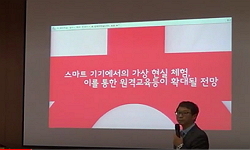율곡 이이(栗谷李珥: 1536-1584)는 인간의 본성을 리(理)로 규정한다. 그는 모든 인간이 동일하게 선한 본성의 리를 지니고 있음을 언급하여 성인으로 변화될 수 있는 근거를 제시하였다. 따라...
http://chineseinput.net/에서 pinyin(병음)방식으로 중국어를 변환할 수 있습니다.
변환된 중국어를 복사하여 사용하시면 됩니다.
- 中文 을 입력하시려면 zhongwen을 입력하시고 space를누르시면됩니다.
- 北京 을 입력하시려면 beijing을 입력하시고 space를 누르시면 됩니다.
https://www.riss.kr/link?id=A100402137
- 저자
- 발행기관
- 학술지명
- 권호사항
-
발행연도
2014
-
작성언어
-
- 주제어
-
KDC
100
-
자료형태
학술저널
-
수록면
95-109(15쪽)
- 제공처
-
0
상세조회 -
0
다운로드
부가정보
국문 초록 (Abstract)
율곡 이이(栗谷李珥: 1536-1584)는 인간의 본성을 리(理)로 규정한다. 그는 모든 인간이 동일하게 선한 본성의 리를 지니고 있음을 언급하여 성인으로 변화될 수 있는 근거를 제시하였다. 따라서 성인이 된다는 것은 인간의 본성을 완전하게 실현함을 의미하는 것이다. '기질의 변화를 통한 본성의 회복'은 율곡의 수양론에서 가장 중요하게 제시된 방안이다. 율곡은 본연지성(本然之性)과 기질지성(氣質之性), 사단(四端)과 칠정(七情)의 리기론적 구조에 초점을 맞추어 리와 기의 역할을 구분함으로써 기의 정화를 통해 리의 본연이 드러나게 하는 수양론을 주장하였다. 그는 선한 본성으로부터 유발된 칠정이 선과 악으로 나뉘는 것은 기의 품질 차이에 기인하는 것으로 설명하였다. 즉 맑은 기가 본연지성을 온전하게 담아내면 이는 칠정의 중절(中節)이 되는 반면, 흐린 기가 본연지성을 가리면 이는 칠정의 부중절(不中節)이 되는 것이다. 실생활에서 수양과 실천의 핵심은 치중화(致中和)이다. 치중화는 각자가 처한 상황의 변화에 알맞게 대처하여 진리를 실천하는 것을 의미한다. 율곡은 인간의 본성이 일상성 즉, 구체적 현실에서의 책임을 통하여 드러난다고 보았다. 그러므로 외물, 즉 사물과의 관계를 항상 염두에 두는 본성을 기르는 방법을 제시하였다. 그는 이처럼 성선의 리, 즉 본연지성을 지향하는 동시에 이를 드러내기 위한 현실적 노력으로서 기질의 수양 및 치중화를 중요시 하였다. 이는 내면의 본성 추구에 있어 항상 현실과의 조화를 고려하는 특징을 보이는 것이라 할 수 있다.
다국어 초록 (Multilingual Abstract)
Yulgok Yi Yi(栗谷李珥: 1536-1584) defines man's human nature as li (理). Moreover, he presents a basis for the possibility that an ordinary person can transform himself into a sage by stating that all men are born with own nature which is good. T...
Yulgok Yi Yi(栗谷李珥: 1536-1584) defines man's human nature as li (理). Moreover, he presents a basis for the possibility that an ordinary person can transform himself into a sage by stating that all men are born with own nature which is good. Therefore, becoming a sage means the perfect realization of man's own nature. 'Recovering one's own nature (本性; original nature) by changing qijil (氣質; physical substance)' is a important way in Yulgok's cultivation. Yulgok took notice of the theoretical structure of li-qi in the Original Nature (本然之性) and the Physical Nature (氣質之性), and the Four Beginnings (四端) and the Seven Emotions (七情), and clearly divided the roles of li and qi in them. So he argued his cultivation theory that people could exhibit the original character of li by the purification of qi. The difference in the quality of qi (氣) is given as the root of the Seven Feelings, which arise from originally good human nature, diverging into the good and the bad. In other words, the state of "pureness" is when pure qi (氣) contains the original human nature in its entirety, from which arises proper Seven Feelings. In contrast, the state of "impureness" is when impure qi (氣) conceals the original human nature, from which arises improper Seven Feelings. The core of moral culture and practice is Chijunghwa (致中和) in real life. Chijunghwa (致中和) means each of us meets the change of the present situation reasonably and practices the truth. Yulgok supposed one's own nature is exposed through the responsibility of the specific reality. So he suggested that how to grow one's own nature as the things in their relation in mind. He followed li (理)- 'human nature is good', at the same time, emphasis on 'Recovering one's own nature (本性; original nature) by changing qijil (氣質; physical substance)' and Chijunghwa (致中和; moderation). This is the consideration of balance the pursuit of one's own nature and reality.
목차 (Table of Contents)
- 국문요약
- 1. 들어가는 말
- 2. 性은 하나이다
- 3. 본성에 따르는 삶
- 4. 본성은 어떻게 드러나는가
- 국문요약
- 1. 들어가는 말
- 2. 性은 하나이다
- 3. 본성에 따르는 삶
- 4. 본성은 어떻게 드러나는가
- 5. 본성의 회복- 氣質 변화의 방법
- 6. 본성의 인식- 致中和
- 7. 眞知의 실현
- 8. 맺음말
- 참고문헌
- Abstract
동일학술지(권/호) 다른 논문
-
- 한국외국어대학교 철학과문화연구소
- 홍성민(Seong mean HONG)
- 2013
-
- 한국외국어대학교 철학문화연구소
- 김세원(Se won KIM)
- 2014
-
- 한국외국어대학교 철학문화연구소
- 김성수
- 2014
-
- 한국외국어대학교 철학문화연구소
- 윤지원(尹志源)
- 2014




 스콜라
스콜라






